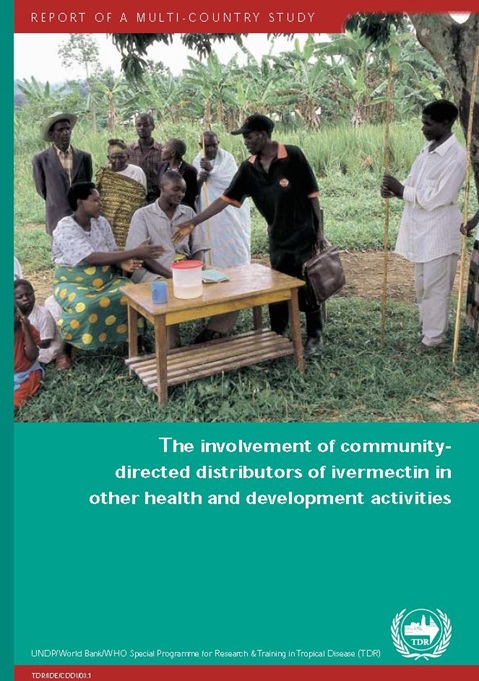The involvement of community-directed distributors of ivermectin in other health and development activities
Report of a multi-country study

Overview
Community-directed treatment with ivermectin (CDTI), through which millions of people are treated, is currently the principal drug delivery strategy for onchocerciasis control. The success of CDTI in onchocerciasis control has caught the attention of other health and development programmes and there have been various attempts to use the CDTI structures and community-directed distributors (CDDs) for other health interventions.
However, the implications of this development for the effectiveness and sustainability of CDTI are not yet clear. Some expect that integration of other community-level health care activities with CDTI would enhance its sustainability. Others fear that sustainability may be jeopardized if CDDs are overloaded with tasks for other health and development activities. Hence there was a need for a detailed scientific evaluation of the current experiences and to identify what actions, if any, need to be taken to ensure that integration of other activities in CDTI strengthens rather than weakens its effectiveness and sustainability. Four research teams, from Calabar, Cross River and Kaduna in Nigeria; South-west Province, Cameroon; and Region Centrale and Region de la Kara,Togo, were commissioned to investigate this.
The study used a cross-sectional design focusing on CDDs in the community as the unit of analysis. The study population consisted of all partners involved in the process of community-directed treatment of onchocerciasis with ivermectin at the community level. These included community members, their leaders and the CDDs they had selected, health facility staff and at the district level, and managers of other health and development programmes operating in the study communities.

